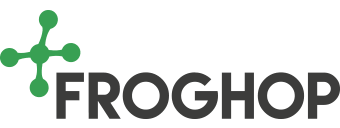Understanding your product costs is crucial for managing and growing any business. It’s doubly so in today’s inflationary environment, especially for food businesses.
Inflation significantly impacts the food and drink industry and its customers. In recent months, inflation has soared, with the cost of food and drink particularly affected by rising production costs. The result is that producers face higher input costs – from ingredients and packaging materials to production and distribution.
Crucial to profitability and success
For any start-up food business, it’s always essential to identify and understand your costs, even at the earliest stages. It becomes crucial to success and profitability as you start to produce and scale up. Using the right costing methods to calculate the true costs and margins of your product(s) is critical, and these need to be considered up-front to ensure the business’s viability over the long term. There are three key areas to consider.
Costs by project stage
What do the costs look like across your development and production process? Consider all materials used across packaging, ingredients, marketing, etc. When you’re doing pre-development costings, there’s a lot to put together – even before you’ve put any ingredients in your bowl.
Here you will need to consider critical factors such as:
- Ingredients – it’s important not to just use the ingredient costs from the nearest supermarket, which will be expensive. Try to think about your market so you can source ingredients from the appropriate commercial suppliers. This is also the time to think about your USP: if you’re making a functional cupcake with lots of health benefits and, therefore, lots of micronutrition, this will add to the costs of ingredients. The last thing you want is to end up with a product that’s not tenable, so consider this stage as your reality check.
- Packaging – There are lots of smaller suppliers out there. Just bear in mind that printed packaging can often add to the size of the minimum order quantity, cost and lead time. Instead of having printed pouches, for example, consider if it could be more cost-effective to have a plain pouch that’s nicely stickered, which can help with costs when you’re starting.
- Production costs – this is harder to get to very upfront if you’re looking at using a third-party manufacturer. It’s a little easier if you’re making the product yourself, where you can work out how long it takes to make the product and work based on giving yourself a wage. The crucial point is that you need as much information about your product and how you’d like it packaged to get a reliable estimate and the production volume you need.
- Branding, marketing and other activities – As long as you know what you’re looking for and how it will be packed and distributed, you can get quotes for branding and production. Likewise, for sales and marketing activities. As you start to construct your business plan and build your marketing plan, you can think about what sort of ongoing support you might need and how to improve it.
When costs are rising and are less than predictable, a solid understanding of product cost calculations can help you make better decisions and manage your profitability. Whether it’s the ingredients you use, the quantities you produce, or even the production method, you can’t get to grips with costs too soon.
